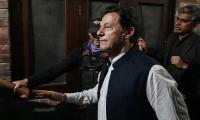Do we want to fight terrorism as a nation? The answer to this question lies in our national attitude towards it. Ambivalence, appeasement, pusillanimity and denial have been the defining features of our national response towards this menace in the past.
Another question germane to the debate is whether a soft state can win a war against terror. The answer to that question should be a resounding no in light of a cursory glance at the terror-infected world map. Terrorism has reared its grisly head in all kinds of states but has been tackled effectively in strong states with effective and functioning state institutions. Ungoverned spaces left as terra are the best enablers a terrorist organisation could ask for.
There are a host of competing definitions for terrorism. But the most evocative was proposed by the 19th century Italian extremist ideologue, Carlo Pisacane who viewed terrorism as “propaganda by deed”. That’s what our terrorists think they are doing when they blow themselves and other people up: creating a spectacle so gory as to singe their message in the common psyche. The aim is to achieve political objectives rooted in actual or imagined grievances.
Though the world has known terrorism in the shape of Jewish zealots – the Sicarri who rebelled against Rome from 62 to 73 AD – and the Hasheeshins of Hassan-e Sabbah in Northern Persia during the late 11th century, the word ‘terrorism’ gained currency during the French Revolution when it was employed more as an instrument of governance rather than a tactic employed by a non-state actor against the state.
The history of terrorism can be summed up in four waves experienced by the world community. The first wave was a reaction to the exploitative conditions engendered by the capitalist system after the Industrial Revolution. The anarchists who assassinated Tsar Nicholas in 1881 considered themselves to be the legatees of the French Revolution according to whom the recourse to terrorism in the Jacobin tradition was a means to defend as well as instigate revolution.
The second wave – from 1920 to 1960 – featured anti-colonial struggles and proxy warfare showcasing the depredations of non-state actors like T E Lawrence, Beider Meinhof, the Italian Red Brigade, the Japanese Red Army, the Abu Nidal Group, the Mau Mau, the communist insurgents in Malaya and the IRA. The fourth wave that began in 1979 was linked with religious terror and employed religious grievances and evangelism as an ideology.
Surrealistically, it retained the venom of the Sicarri, the violence of Kravchinsky’s anarchists and the ruthlessness of Jewish terrorist gangs like Stern and Irgun. The taxonomy of this religiously-inspired fourth wave features three generations of terror.
The first was focused on the internal reform of Muslim societies and showing up in sporadic acts like the assassination of Anwar el-Sadat in Egypt. The second generation was weaned on the heroics of expeditionary warriors – like the Afghan mujahideen – and, therefore, developed a transnational outlook with a focus on global evangelism.
The third generation – which emanated from the second – was a radicalised core of young disaffected zealots, such as Osama bin Laden, who developed a pathological aversion against the West and the decadent and immoral Islamic states whom they regarded as apostates that invoked a medieval edict of ‘takfeer’ (apostasy) introduced by medieval scholars such as Ibn Taymiyyah.
The growing politico-military asymmetries in the world have resulted in a feeling of powerlessness amongst the modern-day religious zealots who consider terrorism to be an asymmetric way of waging wars against the global hegemons.
In countries like Somalia and Pakistan, the impoverished segment of the population depends upon religious seminaries or madressahs for the education of their children. In these seminaries, the children are educated in theological subjects and are heavily indoctrinated in the extremist version of religion. According to Karin von Hippel, an amount of $1 billion has annually been spent on such madressahs, out of which 75 percent of the contribution comes from abroad, mostly from Saudi Arabia.
As per a report by the Pakistan Institute for Peace Studies, there were six religious organisations in Pakistan in 1947 that have grown to be 239 by 2002. In 2013, in pursuance of the UN Resolution 1267, 60 militant organisations were banned. But they kept carrying out their activities by changing their names. Around 23 banned organisations are operating as the Punjabi Taliban in Punjab alone. An analysis of the internet presence of such groups shows that 20 out of 60 of them are active online.
There are three approaches to counter terrorism. The first approach treats terrorism as a crime through law-enforcement and legal remedies while the second approach relies upon military instruments to wage a war against it. The third approach is the most comprehensive and treats terrorism as a disease by focusing on its causes as well as symptoms with equal attention. To fight contemporary terrorism in Pakistan, the civil and military components of the state counterterrorism apparatus need to jettison traditional notions of the Clausewitzean military strategy.
The centre of gravity of a terrorist cell, for instance, might not be found in any hub or node but the will of the human web to fight and sacrifice. This will, in turn, is nourished by a cause and the sympathy of the people on whose behalf the terrorists operate. The moral high ground, legitimacy and popular support are therefore the most important elements of a counterterrorism strategy.
According to Stares and Yacoubian, just as some diseases cannot be completely cured, the issue of religiously-inspired militancy might not be amenable to complete cure. What could be attempted, however, is a solution based on prophylactic as well as curative remedies by attacking the hosts (cell and organisations), agents (terrorists),vectors (the support network), and environment (political, social, and economic deprivations) to reduce the virulence of this disease as much as possible.
The 20 points of NAP are not enough. The entire nation must adopt a cogent approach to win this war where external actors like India and its allies are going all-out to queer the pitch for Pakistan.
The most puissant weapon these days in the armoury of militants is motivation. They motivate on the basis of a narrative that we need to counter through a narrative of our own – a kind of reverse takfiri doctrine through our religious scholars.
The state needs to wrest back our mosques from extremist prayer leaders and convert madressahs into public schools that teach a standardised curriculum in sync with the national curriculum. The weekly Friday sermons in mosques need to be state-approved and all religious discourse in print and on the internet should be monitored and regulated.
The hitherto laissez faire religious franchises must give way to state-controlled regulation to choke the flow of funds as well as extremist ideas. If all of the measures suggested above are doable, then the question that begs an answer is: what stops the state from asserting its writ and winning the war of narratives? The answer might lie in an asymmetry of will between the terrorists and the state. It is time the state summoned this will. It owes this resolve to those who have laid down their lives fighting this scourge.
The writer is a PhD scholar at Nust.
Email: rwjanj@hotmail.com
Chinese philosopher Mencius prophesized 3000 years ago that state that does not employ worthy perishes
Over past two decades, rapid and often chaotic development has increasingly defined Islamabad's landscape
Donald Trump's entry into White House is going to be stormy
Most notable is dangerous surge in conflict at scale not seen since last world war
Coordinated attacks sent wave of insecurity across country, tarnished Pakistan's image globally
For now, IMF agreement provides essential cushion to help Pakistan return from the brink of Sri-Lanka-type default on...







